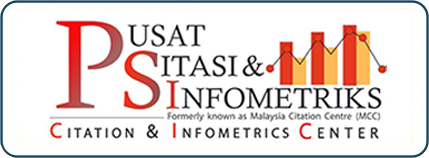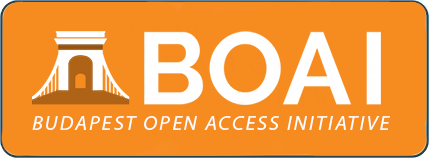Post pandemic consumer behavior: Conceptual framework
DOI:
https://doi.org/10.33102/jmifr.v17i3.280Keywords:
Operant conditioning, COVID-19, new normal, old norms, adverse reactions, in-adverse reactions, stimulus, responsesAbstract
Theories on consumer behavioral change emerged from the study of psychology and later used on consumer behaviors. Behaviorists believe that human behaviors can change from stimulus and responses based on the theories developed by Pavlov, Skinner, Thorndike, and many others. In this paper, the COVID-19 pandemic has forced many countries to take actions such as restricting people movement, providing economic stimulus to push the economy back up, and enforcing social distancing rules and alike to flatten the pandemic curve. The study envisioned that all the actions taken by the government, especially in the context of Malaysia, as stimulus that create positive and negative responses from the learning consumers. The study emulates the operant conditioning theory and proposes four different types of behavior categories that arises from the pandemic. The aim of this paper is to propose a conceptual framework of the market segmentation arising from COVID-19 pandemic. Methodology used by the study is based from the literature search and secondary data to come out with the suggested framework. The expected findings of the study are the four segments of the consumers based on their behavioral reactions post pandemic. The four segments are the back to square one, new normal, moderately new norm, and recycle consumer groups. Their preferences, needs, and wants can change the landscape of how market can be segmented apart from how business should react towards the changes in the future. Policy could be developed in terms of promoting the new norms behavior to overcome COVID-19 problems and future outbreaks as well as to ensure that Malaysia can be accommodative to the industrial revolution 4.0. Future research should be conducted to replicate the framework in different contexts and industries.
Downloads
References
Abdullah, Z. (2020, February 19). Delivery services see spike in business because of COVID-19. Channel News Asia. https://www.channelnewsasia.com/news/singapore/deliveryservices-see-spike-in-business-coronavirus-covid-19-12443628
Adnan, A. A. (2009). Pandangan pakar terhadap penentu ekstrinsik dalam pemilihan bank menurut tuntutan syarak. The Journal of Muamalat and Islamic Finance Research, 6(1). 147-176.
Al-Hawari, M. A. A. (2014). Does customer sociability matter? Differences in e-quality, esatisfaction, and e-loyalty between introvert and extravert online banking users. Journal of Services Marketing, 28(7), 538-546.https://doi.org/10.1108/JSM-02-2013-0036
Barnes, S. J. (2020). Information management research and practice in the post-COVID-19 world. International Journal of Information Management, (June), 102175. https://doi.org/10.1016/j.ijinfomgt.2020.102175
Burchell, K., Rettie, R., & Patel, K. (2013). Marketing social norms: Social marketing and the social norm approach. Journal of Consumer Behaviour, 12(1), 1-9. https://doi.org/10.1002/cb.1395
Catania, A. C. (2003). BF Skinner's science and human behavior: Its antecedents and its consequences. Journal of the Experimental Analysis of Behavior, 80(3), 313-320. https://doi.org/10.1901/jeab.2003.80-313
Chen, J., Lewis, B., Marathe, A., Marathe, M., Swarup, S., & Vullikanti, A. K. (2017). Individual and collective behaviour in public health epidemiology. In Handbook of statistics (Vol. 36, pp. 329-365). Elsevier.
Cialdini, R. B. (2007). Descriptive social norms as underappreciated sources of social control. Psychometrika, 72(2), 263–268. https://doi.org/10.1007/s11336-006-1560-6
Cialdini, R. B. (2012). The focus theory of normative conduct. In P. A. M. Van Lange, A. W. Kruglanski, & E. T. Higgins (Eds.), Handbook of theories of social psychology. (pp. 295–312). Sage Publications Ltd.
Cialdini, R. B., & Goldstein, N. J. (2004). Social influence: Compliance and conformity. Annual
Review of Psychology, 55, 591-621.
https://doi.org/10.1146/annurev.psych.55.090902.142015
Del Valle, S., Hethcote, H., Hyman, J. M., & Castillo-Chavez, C. (2005). Effects of behavioral changes in a smallpox attack model. Mathematical biosciences, 195(2), 228-251. https://doi.org/10.1016/j.mbs.2005.03.006
Donthu, N., & Gustafsson, A. (2020). Effects of COVID-19 on business and research. Journal of Business Research, 117, 284.https://doi.org/10.1016/j.mbs.2005.03.006
Ferguson, N. (2007). Capturing human behavior. Nature, 446(7137), 733-733. https://doi.org/10.1038/446733a
Grashuis, J., Skevas, T., & Segovia, M. S. (2020). Grocery shopping preferences during the COVID-19 pandemic. Sustainability, 12(13), 5369. https://doi.org/10.3390/su12135369
Hamilton, I. A. (2020, April 15). Jeff Bezos is wealthier by $24 billion in 2020, as Amazon reports at least 74 COVID-19 US warehouse cases and its first death. Business Insider. https://www.businessinsider.my/jeff-bezos-net-worth-jumps-23-billion-duringcoronavirus-crisis-2020-4?r=US&IR=T
Hatchett, R. J., Mecher, C. E., & Lipsitch, M. (2007). Public health interventions and epidemic intensity during the 1918 influenza pandemic. Proceedings of the National Academy of Sciences, 104(18), 7582-7587. https://doi.org/10.1073/pnas.0610941104
Kallgren, C. A., Reno, R. R., & Cialdini, R. B. (2000). A focus theory of normative conduct: When norms do and do not affect behavior. Personality and Social Psychology Bulletin, 26,
-1012. https://doi.org/10.1177/01461672002610009
Kirk, C. P., & Rifkin, L. S. (2020). I'll trade you diamonds for toilet paper: Consumer reacting, coping and adapting behaviors in the COVID-19 pandemic. Journal of Business Research. 117, 124-131. https://doi.org/10.1016/j.jbusres.2020.05.028
Kodama, M. (2020). Digitally transforming work styles in an era of infectious disease. International Journal of Information Management, (June), 102172.
https://doi.org/10.1016/j.ijinfomgt.2020.102172
Lau, J. T., Kim, J. H., Tsui, H., & Griffiths, S. (2007). Perceptions related to human avian influenza and their associations with anticipated psychological and behavioral responses at the onset of outbreak in the Hong Kong Chinese general population. American Journal of Infection Control, 35, 38-49. https://doi.org/10.1016/j.ajic.2006.07.010
Leung, G. M., Ho, L. M., Chan, S. K., Ho, S. Y., Bacon-Shone, J., Choy, R. Y., Hedley, A. J., Lam, T. H., & Fielding, R. (2005). Longitudinal assessment of community psychobehavioral responses during and after the 2003 outbreak of severe acute respiratory syndrome in Hong Kong. Clinical Infectious Diseases, 40(12), 1713-1720. https://doi.org/10.1086/429923
Lundberg, S. (2020, June 23). Why psychographic data is crucial in times of crisis. Globalwebindex. https://blog.globalwebindex.com/marketing/psychographic-data-crucial-in-crisis/
Md Shah, A. U., Safri, S. N. A., Thevadas, R., Noordin, N. K., Abd Rahman, A., Sekawi, Z., & Sultan, M. T. H. (2020). COVID-19 outbreak in Malaysia: Actions taken by the Malaysian government. International Journal of Infectious Diseases. 97(August 2020), 108-116. https://doi.org/10.1016/j.ijid.2020.05.093
Naim, A. M., Hamid, M. L. A., & Wahab, M. Z. H. (2019). The roles of lifestyle, future need and customer preferences in customer’s satisfaction on Islamic banks products and services. The Journal of Muamalat and Islamic Finance Research, 16(2),60-76.
https://doi.org/10.33102/jmifr.v16i2.223
Pang, X., Zhu, Z., Xu, F., Guo, J., Gong, X., Liu, D., & Feikin, D. R. (2003). Evaluation of control measures implemented in the severe acute respiratory syndrome outbreak in Beijing, 2003. Jama, 290(24), 3215-3221. https://doi:10.1001/jama.290.24.3215
Poletti, P., Ajelli, M., & Merler, S. (2011). The effect of risk perception on the 2009 H1N1 pandemic influenza dynamics. PloS one, 6(2), e16460. https://doi.org/10.1371/journal.pone.0016460
Reid, A. H., Fanning, T. G., Hultin, J. V., & Taubenberger, J. K. (1999). Origin and evolution of the 1918 “Spanish” influenza virus hemagglutinin gene. Proceedings of the National Academy of Sciences, 96(4), 1651-1656. https://doi.org/10.1073/pnas.96.4.1651
Scott, S., & Duncan, C. J. (2001). Biology of plagues: Evidence from historical populations. Cambridge University Press.
Shaw, R., Kim, Y. K., & Hua, J. (2020). Governance, technology and citizen behavior in pandemic: Lessons from COVID-19 in East Asia. Progress in Disaster Science, 6, 100090.
https://doi.org/10.1016/j.pdisas.2020.100090
Seto, W. H., Tsang, D., Yung, R. W. H., Ching, T. Y., Ng, T. K., Ho, M., Ho, L. M., Peiris, J. S. M., & Advisors of Expert SARS group of Hospital Authority. (2003). Effectiveness of precautions against droplets and contact in prevention of nosocomial transmission of severe acute respiratory syndrome (SARS). The Lancet, 361(9368), 1519-1520. https://doi.org/10.1016/S0140-6736(03)13168-6
Sheth, J. (2020). Impact of COVID-19 on consumer behaviour: Will the old habits return or die? Journal of Business Research, 117, 280-283. https://doi.org/10.1016/j.jbusres.2020.05.059
Van Bavel, J. J., Baicker, K., Boggio, P. S., Capraro, V., Cichocka, A., Cikara, M., & Drury, J. (2020). Using social and behavioural science to support COVID-19 pandemic response. Nature Human Behaviour, 1-12. https://doi.org/10.1038/s41562-020-0884-z
White, K. M., Smith, J. R., Terry, D. J., Greenslade, J. H., & McKimmie, B. M. (2009). Social influence in the theory of planned behavior: The role of descriptive, injunctive, and ingroup norms. British Journal of Social Psychology, 48(1), 135-158. https://doi.org/10.1348/014466608X295207
Wong, L. P., & Sam, I. C. (2011). Behavioral responses to the influenza A (H1N1) outbreak in Malaysia. Journal of Behavioral Medicine, 34(1), 23-31. https://doi.org/10.1007/s10865-0109283-7
Wu, P., Fang, Y., Guan, Z., Fan, B., Kong, J., Yao, Z., & Hoven, C. W. (2009). The psychological impact of the SARS epidemic on hospital employees in China: Exposure, risk perception, and altruistic acceptance of risk. The Canadian Journal of Psychiatry, 54(5), 302-311. https://doi.org/10.1177/070674370905400504
Wu, S., Yang, P., Li, H., Ma, C., Zhang, Y., & Wang, Q. (2013). Influenza vaccination coverage rates among adults before and after the 2009 influenza pandemic and the reasons for non-vaccination in Beijing, China: A cross-sectional study. BMC public health, 13(1), 636. https://doi.org/10.1186/1471-2458-13-636
Downloads
Published
How to Cite
Issue
Section
License
Copyright (c) 2020 Nuradli Ridzwan Shah Mohd Dali, Wan Rasyidah Wan Nawang, Wan Nur Fazni Wan Mohamad Nazarie, Hanifah Abdul Hamid

This work is licensed under a Creative Commons Attribution 4.0 International License.















